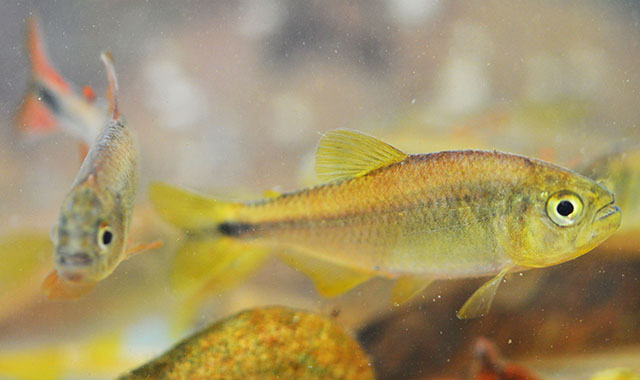| Characidae (Characins; tetras), subfamily: Stethaprioninae |
| 5.81 cm SL (male/unsexed) |
|
benthopelagic; freshwater |
| South America: known only from córrego Pipa, upper Rio Paraguai in Brazil. |
|
Dorsal soft rays (total): 11-11; Anal soft rays: 18-23; Vertebrae: 32-33. Distinguished from all other members of the genus Hyphessobrycon by the following combination of characters: black humeral spot, slightly diffuse at its tips; presence of caudal-peduncle blotch; midlateral longitudinal body stripe, conspicuous in its posteriormost portion , from vertical through anterior third of pectoral fin to caudal-peduncle blotch, reaching to the tips of the middle caudal rays; iii,15 - iv,9 anal fin rays (mode iv,17); upper jaw length 42.3-49.5% HL; 2-5 teeth (mode 3) on maxilla; all fins reddish orange in males and yellowish in females (Ref. 74929).
Description: Dorsal fin ii,9; Anal fin iii,15 - iv,19; Pectoral fin i9 - i13; Pelvic fin i5 - i7 (Ref. 74929). |
| Prefers to inhabit lentic areas with cold and transparent water and with mostly silt and rock substrates (Ref. 74929). Occurs syntopically with Parodon aff. nasus, Astyanax asuncionensis, Knodus chapadae, Hypostomus sp., Ancistrus sp. (Ref. 74929). Feeds on vascular plants, algae and arthropods belonging to Aranae and Hymenoptera-Formicidae (Ref. 74929). |
|
Least Concern (LC); Date assessed: 07 November 2018 Ref. (130435)
|
| harmless |
Source and more info: www.fishbase.org. For personal, classroom, and other internal use only. Not for publication.

